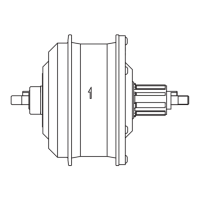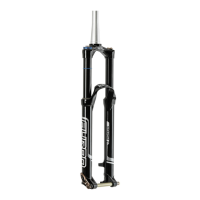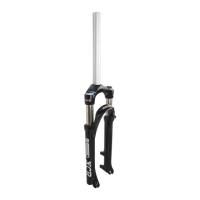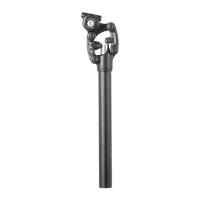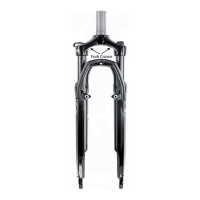
Do you have a question about the SR Suntour M2025 and is the answer not in the manual?
| Type | Suspension Fork |
|---|---|
| Travel | 50 mm |
| Axle Type | 9mm QR |
| Spring Type | Coil |
| Brake Compatibility | V-Brake |
| Steerer Tube Diameter | 1 1/8 inch |
| Wheel Size | 26" |
Safety recommendations for parents regarding child use of bicycles.
Guidance on checking and adjusting bike size for optimal fit and safety.
Essential safety precautions and recommended gear for riding.
Procedures for ensuring the bicycle is mechanically sound before each ride.
Advice for the initial ride, focusing on familiarization with controls.
Essential rules for safe bicycle operation and rider responsibility.
Guidelines for safe riding on roads, off-road, and in adverse conditions.
Safety considerations for stunt, competition, and aggressive riding.
Warnings and guidance on changing components and adding accessories.
How to determine correct standover height for frame size.
Adjusting saddle height, angle, and fore/aft position for optimal fit.
Adjusting handlebar height, angle, and control lever positions.
Adjusting brake lever reach for comfortable and effective operation.
Information on wheel types, secure mounting, and removal.
Proper adjustment and securing of seat post cam clamps.
Explanation of different brake types, their function, and safe use.
How to operate derailleur and internal gear hub systems.
Understanding pedals, toe overlap, and safe engagement techniques.
How to use, maintain, and adjust bicycle suspension systems.
Information on tire pressure, types, valves, and maintenance.
Recommended maintenance tasks and their frequency for optimal performance.
How to check for damage after impact and understanding component wear.
Use case for paved surfaces, optimized for performance and light weight.
For paved roads, gravel, and bike paths; not for off-road or jumping.
For rough trails and intermediate terrain, excluding jumping.
For rough technical areas, moderate obstacles, and small jumps.
For the most difficult terrain; extremely hazardous, requires skill and safety gear.
For man-made jumps, ramps, and skate parks; not for large suspension travel needs.
For cyclo-cross riding, training, racing, and all-weather commuting.
Awareness that all parts have a finite, limited useful life.
Need for frequent dealer inspections and rider self-checks.
Properties of metals like steel, aluminum, and titanium in bike frames.
Properties of carbon fiber composites, their strengths, and limitations.
Explanation of the mechanism and activation of a coaster brake.
Guidance on coaster brake service and adjustment by a dealer.
Recommended torque values for various bicycle fasteners and components.
